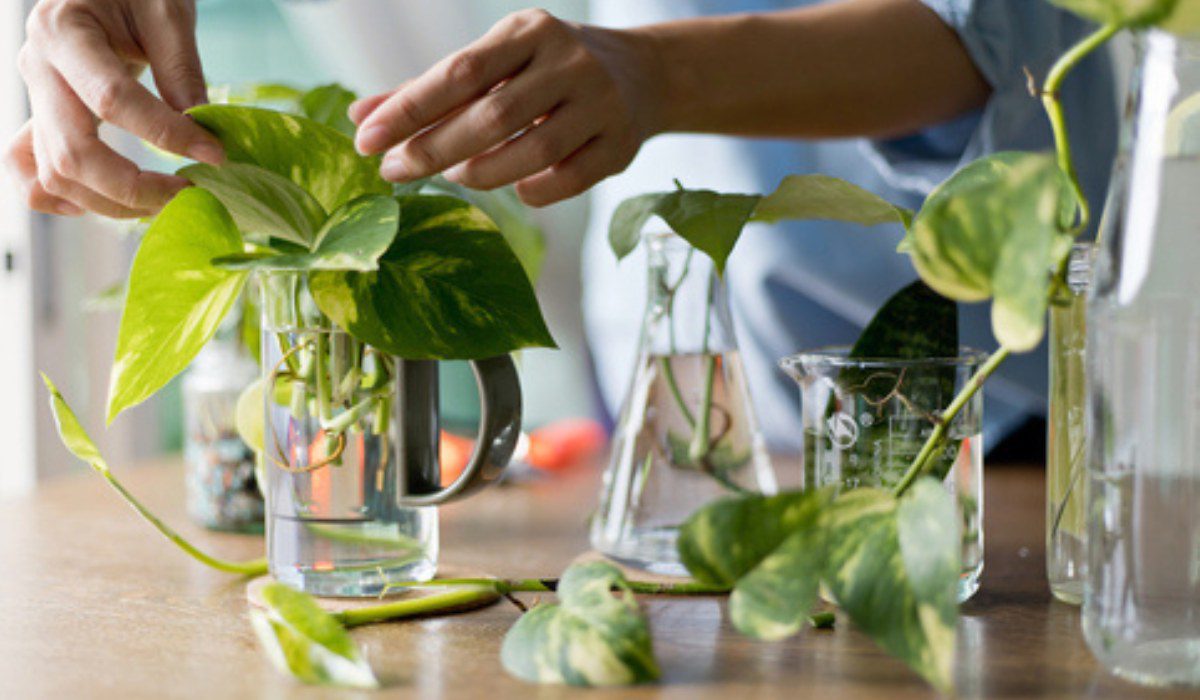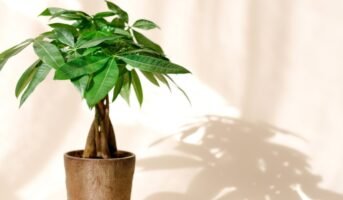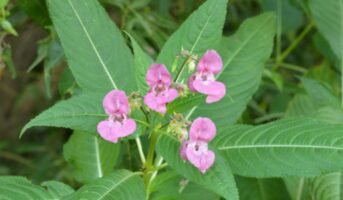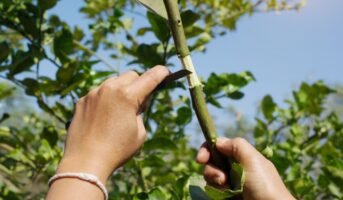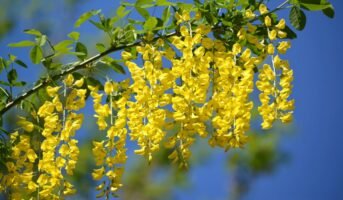Layering in plants is a method of plant reproduction in which the young plant stays at least partially linked to the parent plant while developing new roots. Layering can happen innately as a result of altered stem architecture. Since water stress is reduced and quantities of carbohydrate and mineral nutrients are high, this form of vegetative development is typically successful.
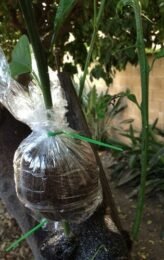
Source: Pinterest
The home gardener can quickly grasp the necessary skills. Layering is a successful method of propagating shrubs and houseplants. There are various methods for layering propagation, but they all function by encouraging the plant to develop roots across a stem and then removing the top of the rooted branch from the parent plant. Plants can be layered best in the spring because they are already in a growth stage. It enables you to grow various plants where you previously only had bare branches, allowing you to perfectly replicate your favorite species of trees.
see also: all about Stress Hormone In Plants
What is layering?
Layering refers to the method of plant propagation in which the new plant stays at least partially attached to the mother plant while it forms new roots and may occur naturally through modified stem structures. It is an established asexual propagation method and does not need special tools or controlled environmental conditions, such as a mist bench, to allow rooting.
See also about: different types of leaves with names
Layering: Benefits
New plants are clones of the original plant, displaying the same characteristics, including the flower, fruit and leaves. Plant selection involves plants with a flexible stem.
Simple layering is better when dealing with a cascading or spreading plant. These plants are likely to propagate this way, and potting a new limb will provide extra plants without the need to sow new seed.
Reasons of layering
- Layering techniques allow hard-to-root plants to develop roots faster and with relatively high efficiency than cuttings.
- Until it develops roots and can support itself, the layered stem continuously receives water and nutrients from the mother plant.
Methods of layering
Depending on the kind of plant you want to propagate, there are five major methods you might try while seeking information on plant stacking. The next sections outline five techniques for stacking young plants.
Simple layering
Simple layering in plants can be performed by bending a small shrub, bendable stem to the ground. Cover a portion with dirt, allowing six to twelve inches above the ground—to anchor in the background after bending its tip in a good direction. Although cutting the lower side of the arched stem may also be beneficial, the sharp bending will frequently cause rooting. The large variety of plants that can be reproduced using this technique can be grown indoors or outdoors on robust shrubs that produce a lot of suckers.
Steps:
- At a point 15 to 20 cm from the apex, these shoots are arched and “pinned down,” creating a “U” shape.
- At the bottom of the “U,” rooting is promoted by bowing, twisting, cutting, or mottling.
- Soil or other components cover the base of the layer, keeping the tip exposed.
Plants to try: climbing roses, rhododendron, jasmine, etc.
Compound Or Serpentine Layering
Comparable to simple layering, compound or serpentine layering allows for forming many layers from a single stem. A one-year-old branch is alternately covered and uncovered across the length in this modified version of simple layering. At each section, it’s necessary to leave one lateral bud exposed and at least one hidden. The ideal plants for this approach are ground plants that trail and are vine-like.
Plants to try: Pothos, grapes, vining honeysuckle, dogwood, etc.
Air layering
Several tropical and subtropical trees and shrubs, including litchi, guava, mango, longan, etc., are propagated using the old layering in plant technique known as air layering, which was first imported from China. The layered shoot’s active leaves promote the production of roots.
Steps:
For Monocot
- Cut the stem in 1/3 with an upward 1- to 112-inch cut.
- Sphagnum moss that has been soaked in water, pressed to remove extra moisture, and left damp is placed all around the wound (approximately a handful).
- Place a plastic bag or black polythene over it. Tie carefully. The dark polythene keeps light out and prevents fungus and algae from developing in the moss.
- Cut the stem beneath the roots after a robust root system has developed, then pot the new plant.
For Dicot
- Dicots go through a similar process, but the stem is stripped of a 1-inch ring of bark instead. Cut the stem in two parallel directions, through the bark and cambium layer, about an inch apart, with a sharp knife. Monocots should be wrapped and covered using the same technique.
Plants To Try: Norfolk Island pine, Schefflera, azalea, rubber plant, magnolia, roses, etc.
Trench layering or continuous layering
Trench layering is preferred for plants, especially fruit tree that are difficult to propagate through other methods and those that do not form many shoots after an initial cutback. A trench layer is initiated by positioning new plants at an angle in the stool bed. When new plants are established, they are laid over and held in position using a wire or peg.
Woody plants, which grow long vines and are challenging to propagate using conventional techniques, are typically reproduced using this method.
Steps:
- The parent plants are placed in rows 90 cm apart at the bottom of a trench at a 450-degree slant.
- These plants grow in a continuous line of stacked plants thanks to their long, flexible branches that are nailed to the ground.
- New branches that arise from plants gradually slope up to a depth of 15-20 cm in the autumn, winter, or at the end of the growing season. It also depends on the plant species that have to be propagated.
Plants to try: Apple.
Mound layering or stooling
The young sprouts/shoots are pruned back to the ground and coated with soil or another rooting medium to induce the formation of roots at their bases. For trees and shrubs with robust stems, mound layering is used. Cover the main stem after cutting it to the ground. Several rooted branches will develop from the stem’s end buds. which are a type of carbohydrate
Steps:
- The plant should be clipped at the ground layer during the dormant season.
- New shoots should be covered at the base at the start of the next blooming cycle.
- Divide the plant into many plants once the roots have grown far enough.
Plants to try: Currants, gooseberry, and other fruit crops.
How to improve layering success?

Source: Pinterest
- Phloem can be partially severed by slanting cuts on the bottom of the stem that are less than half its diameter. Another approach is to strip the stem’s bark entirely while leaving the wood.
- From the shoot tip to the roots, auxin, a crucial natural hormone that promotes root growth, travels through the phloem. Auxin builds up on top of the wound. A callus is the dedifferentiated plant tissue that forms from the injured tissue and develops into new plant organs.
- To avoid contamination by insects or diseases, pick plants with flexible branches to bend to the ground without suffering damage.
- Making sure your stem portion is blanketed with the material before covering it in plastic will help prevent the growth of roots, which is often facilitated by reducing light.
Conclusion
One of the simplest ways to propagate new plants is via layering in plants. Anybody can use the layering technique to make their garden or lawn distinctive. Any components you want to include in the layout, such as a garden building or already-existing trees, can be added first. After that, be as creative as you want!
FAQs
What is tip layering?
Roots begin to form when a branch's tip touches the ground. Tip layering is the term for this procedure.
What is the best natural rooting hormone for layering?
Willow extract is one of the best rooting hormones because it contains two auxin hormones.
What are the disadvantages of layering?
Only a small number of plants may be grown, and stacked plants have an exceptionally high mortality rate.
What is the main advantage of layering?
It does not necessitate precise control over water, relative humidity, or temperature in contrast to other propagation methods. It also requires little infrastructure and is easy to implement.
Housing News Desk is the news desk of leading online real estate portal, Housing.com. Housing News Desk focuses on a variety of topics such as real estate laws, taxes, current news, property trends, home loans, rentals, décor, green homes, home improvement, etc. The main objective of the news desk, is to cover the real estate sector from the perspective of providing information that is useful to the end-user.
Facebook: https://www.facebook.com/housing.com/
Twitter: https://twitter.com/Housing
Email: [email protected]
